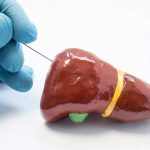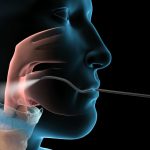A CT urogram is a test using a CT scan and special dye (contrast medium) to look at the urinary system. The contrast medium helps show up the urinary system more clearly.
You have a CT scan of your:
- kidney
- bladder
- tubes that connect the kidneys to your bladder (ureters)
A CT scan uses x-rays to take detailed pictures of your body from different angles. A computer then puts them together to make a 3 dimensional (3D) image. CT stands for computed (axial) tomography.
It can see details like the soft tissues and blood vessels.

You usually have a CT urogram in the x-ray (radiology) department as an outpatient. A radiographer operates the scanner. The whole appointment can take up to an hour and a half.
Why do I need a CT urogram?
You might have a CT urogram to:
- find out the cause of your symptoms
- check how well your kidneys and the rest of your urinary system are working
- check how well treatment is working
Preparation for a CT urogram
You can usually eat and drink normally for this test. Follow the instructions given to you by your hospital.
Usually, you have to drink a certain amount of water before you arrive for your CT scan. This is so your bladder can get bigger and be seen more clearly on the pictures.
You have an injection of contrast medium for this test. This is a type of dye that shows up body tissues more clearly on the scan. You have the injection through a small thin tube (cannula) into your arm. The cannula stays in place until after your scan. This is in case you have any problems such as an allergic reaction after having the injection.
Let the radiology department know if you:
- are on medication for diabetes such as metformin
- have an allergy to contrast medium or iodine
- are pregnant or think you might be
- have any kidney problems
- are on blood thinning medicines such as warfarin
You can take all other medication as normal.
What happens
When you arrive you usually fill out a checklist or questionnaire with the radiographer. They also explain about what to expect during the CT urogram.
This is a good time to ask any questions you may have.
You usually change into a hospital gown. It’s a good idea to take a dressing gown with you if you have one. You can then wear this on top of the hospital gown while waiting for your scan.
Before the scan you remove jewellery and other metal objects, such as piercings around the area being scanned. Metal interferes with the images produced by the scanner.
The radiographer inserts the cannula into your arm.
When it’s time, your radiographer or an assistant takes you into the scanning room.
In the scanning room
A CT scanning machine is large and shaped like a doughnut.
You might have a drug called furosemide through your cannula. This makes you produce more urine and may help with the pictures of your kidneys. Your radiographer gives you this just before you have an injection of contrast medium through your cannula.
The contrast medium can make you:
- feel hot and flushed for a minute or two
- have a metallic taste in your mouth
- feel like you’re passing urine but you aren’t – this feeling is common and passes quickly
A CT scan is quite open, but some people can feel claustrophobic. Let the radiographer know if this will be a problem for you.
Having the CT urogram
You usually lie down on the machine couch on your back. But sometimes you may need to lay on your front.
Your radiographer makes sure you’re in the right position. They sometimes use foam shapes and cushions to do this.
They leave the room and talk to you through an intercom. They can see you through a window from the control room.
The couch slowly slides backwards and forwards through the hole of the scanner. The machine takes pictures as you move through it.
The scan is painless but can be uncomfortable because you have to stay still. Tell your radiographer if you’re getting stiff and need to move.
During the scan
You’ll hear a whirring noise from the scanner.
Your radiographer will ask you to hold your breath at times.
They may stop the scan and ask you to walk around for several minutes. Or they may ask you to go to the toilet to empty your bladder (have a wee). Then you carry on with the scan.
If your radiographer wants you to move position they’ll talk to you through the intercom. Or they’ll come back into the room to help you.
When the scan is over, your radiographer comes back into the room and lowers the couch so you can get up.
Voiceover: A CT scan helps your doctor make a diagnosis, decide about what treatment you need or find out if your treatment is working.
This type of scan takes a series of x-rays and uses a computer to put them together.
Before your scan you may need to drink either half a litre of water or a type of dye called a contrast medium. This helps to make the scan clearer.
Before most scans you have a small tube put into your vein, which connects to a drip containing the dye. Again, this helps to show up the inside of your body more clearly on the scan.
During the scan the bed moves in and out of the scanner. You may find it a bit noisy.
As the drip goes in you’ll probably get a metallic taste in your mouth, feel warm and you might think you are passing urine, you’re not. These feelings pass quickly.
The radiographer controls the scan from a separate room. The CT machine takes pictures of your body from different angles and builds up a series of cross sections.
This creates a very detailed picture of the part of your body being scanned. Most scans take just a few minutes. The whole thing takes about 90 minutes and you usually get the results within a couple of weeks.
After your CT scan
After your CT urogram
You stay in the department for about 15 to 30 minutes if you had an injection of contrast medium. This is in case it makes you feel unwell, which is rare.
Your radiographer removes the cannula from your arm before you go home.
You should be able to go home, back to work or the ward soon afterwards. You can eat and drink normally.
Possible risks
A CT urogram is a safe test for most people but like all medical tests it has some possible risks. Your doctor and radiographer make sure the benefits of having the test outweigh these risks.
Some of the possible risks include:
An allergic reaction
Rarely, people have an allergic reaction to the contrast medium. This most often starts with weakness, sweating and difficulty breathing. Your radiographer will ask if you have any allergies before you have the contrast medium. Tell them immediately if you feel unwell.
Bruising and swelling
You might get a small bruise around the area where they put the needle in for the cannula.
There’s a risk that the contrast medium will leak outside the vein. This can cause swelling and pain in your hand or arm but it’s rare.
Kidney problems
There is a small risk that the contrast medium can affect your kidneys. Your radiographer checks your most recent blood test results before your scan. This is to make sure your kidneys are working well.
Radiation
Exposure to radiation during a CT scan can slightly increase your risk of developing cancer in the future. Talk to your doctor if this worries you.
Pregnancy
Pregnant women should only have CT scans in emergencies. Contact the department as soon as you can before the scan if you are pregnant or think that you might be.
Getting your results
You should get your results within 1 or 2 weeks.
Waiting for results can make you anxious. Ask your doctor or nurse how long it will take to get them. Contact the doctor who arranged the test if you haven’t heard anything after a couple of weeks.
You might have contact details for a specialist nurse who you can contact for information if you need to. It may help to talk to a close friend or relative about how you feel. You may want them to go with you to get the results for support.



